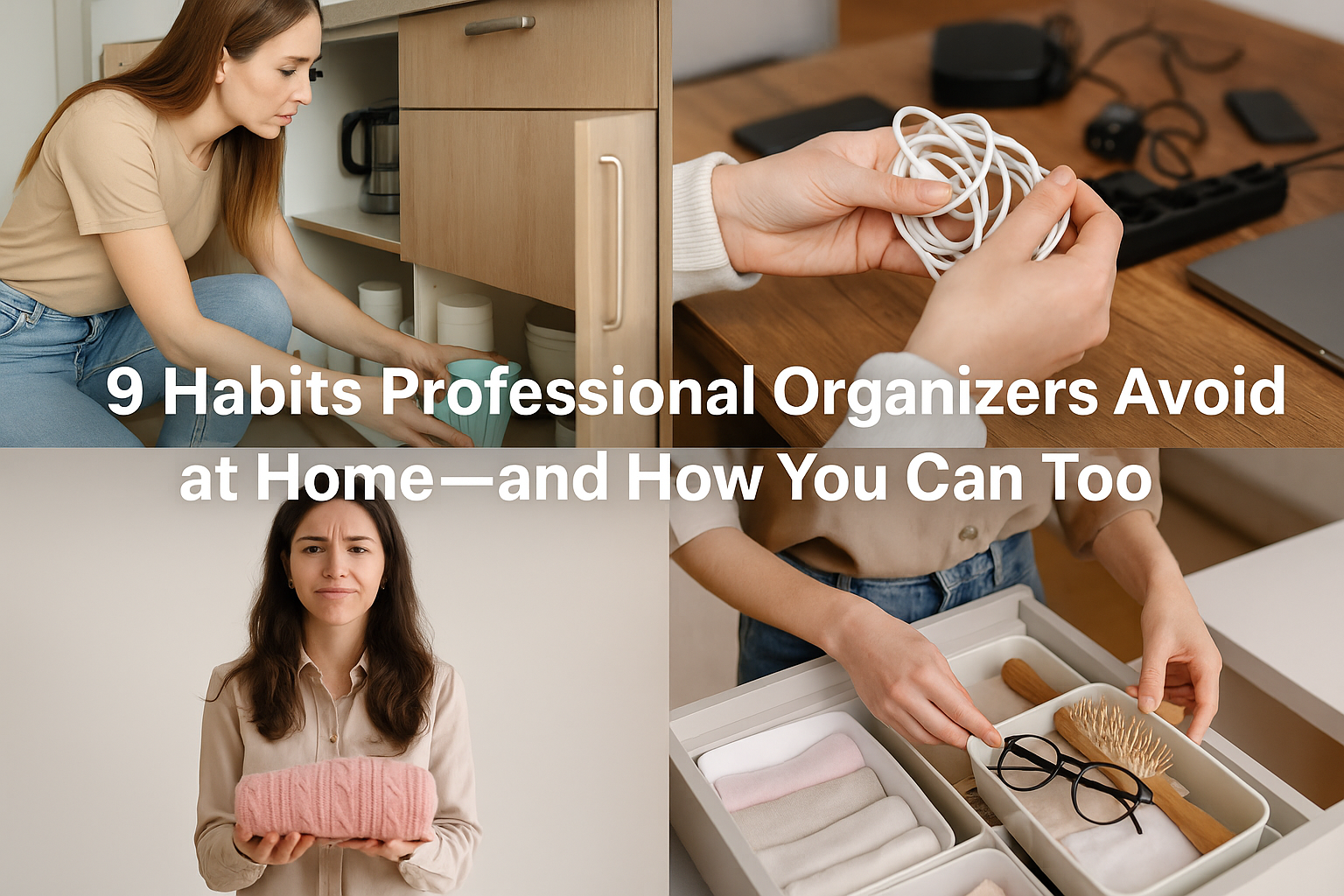Professional organizers are the unsung heroes behind clutter-free, serene living spaces. Their homes are not just tidy; they’re functional, intentional, and stress-free. But what sets them apart isn’t just what they do—it’s what they deliberately avoid. By steering clear of certain habits, they maintain order and harmony in their personal spaces. Let’s delve into the nine things professional organizers never do in their own homes and discover how adopting these practices can transform your living environment.
1. Chasing Every Organizing Trend
In the age of social media, it’s tempting to jump on every new organizing fad. However, professional organizers prioritize functionality over fleeting trends. Rachel Rosenthal, an organizing expert, emphasizes that real organizing isn’t about trends but about creating spaces that truly work for you. Gimmicky products might look appealing initially but often fail in practicality. Instead, focus on simple, intentional solutions tailored to your needs.
2. Maintaining a ‘Junk Drawer’
The infamous junk drawer—a catch-all for miscellaneous items—is a no-go for professional organizers. Cheryl Russo of Organizing by Cheryl points out that while it might seem like a solution, it’s merely relocating clutter. Every item should have a designated place, ensuring that organization permeates every corner of the home.
3. Saving Items for ‘Special Occasions’
Holding onto items for that elusive ‘perfect moment’ often leads to unused possessions gathering dust. Jennifer DuBois, founder of Home With Jen D., advocates for using and enjoying items that bring joy now, rather than waiting for a special occasion that might never come.
4. Accumulating Unused Kitchen Gadgets
From avocado slicers to holiday-themed waffle makers, it’s easy to collect kitchen gadgets that see little use. Professional organizers recommend evaluating the utility of each appliance. If it’s not used regularly, it’s taking up valuable space. Prioritize tools that serve multiple purposes and are frequently used.
5. Ignoring Cord Clutter
Tangled cords and visible wires can disrupt the visual harmony of a room. Jennifer DuBois emphasizes the importance of managing cord clutter using tools like cord wraps, clips, and discreet extension cords to maintain a neat appearance.
6. Buying Storage Solutions Before Decluttering
It’s a common mistake to purchase storage bins and baskets in hopes of achieving organization. However, Nichole Gehman of Organize By Designe advises sorting and purging items first. Only after determining what’s essential should you invest in storage solutions, ensuring they fit your actual needs.
7. Keeping Items Out of Guilt
Sentimental attachments or the guilt of discarding gifts can lead to retaining unnecessary items. Sarit Weiss, founder of Neat & Orderly, suggests letting go of possessions that no longer serve a purpose, even if they were gifts or expensive purchases. Holding onto them out of obligation only adds emotional clutter.
8. Storing Items Loose in Drawers
Allowing items to float freely in drawers can quickly lead to disorganization. Christina Morton DesAuguste, founder of The Organizing Company, recommends using drawer dividers and storage trays to maintain order and ensure every item has its place.
9. Sticking Rigidly to One Organizing System
Life is dynamic, and so are our organizational needs. Rachel Rosenthal highlights the importance of flexibility in organizing systems. As circumstances change—be it a new job, a growing family, or a shift in routines—it’s crucial to adapt and modify organizational methods to suit current needs.
Conclusion
Professional organizers achieve and maintain clutter-free homes not just by implementing effective strategies but by consciously avoiding habits that lead to disarray. By steering clear of these nine pitfalls, you can create a living space that’s not only organized but also harmonious and tailored to your lifestyle. Remember, the goal isn’t perfection but creating an environment that supports and enhances your daily life.

